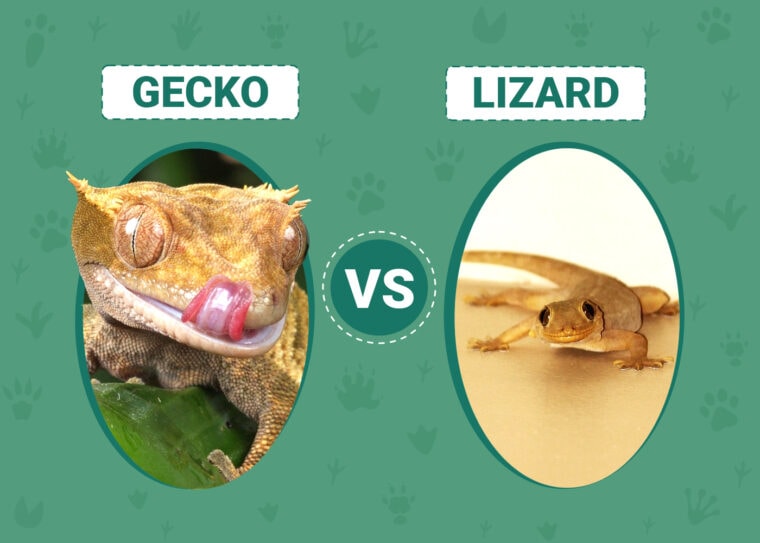
Click to Skip Ahead
When you dip into the world of cold-blooded creatures, things can get a little confusing. Are you dealing with a reptile or amphibian? Then, which subcategory do they fall under? Learning the differences, especially as a beginner, can seem a little overwhelming. But don’t worry—you’ll get the hang of it in no time.
We are going to discuss geckos and lizards. What you might not realize is, but geckos are actually a species of lizard. So, think of it this way: all geckos are lizards, but not all lizards are geckos. Let’s find out what the deal is and learn about other lizards that you can own as pets.
Visual Differences

At a Glance
Gecko Overview

Geckos have really gained traction over the years with reptile lovers. They are available in many intriguing and eye-catching morphs and hybrids—plus, there are several types of geckos that you can own as pets.
Geckos aren’t terribly fragile, and they tend to have very relaxed behavior. But they can sometimes be a challenge if you’re totally unfamiliar with reptile needs. As long as you prepare yourself and buy all the necessities, a beginner can have luck with geckos.
Environment
Geckos need a particular set up to mimic their natural habitat.
Tank Size
If you have only one gecko, a 10-gallon aquarium is plenty of space for a fully grown adult. However, if you add more, you’ll need to add 5 gallons of extra space per gecko.
Substrate
Geckos do best with reptile carpet, newspaper, or paper towels. If geckos have any small granules in their cage like sand or gravel, they could ingest the bits while eating, leading to all sorts of digestive troubles.
Cage Décor
You can buy hides, branches, plants, and other decorations to keep their habitat looking its best. Plus, it gives them somewhere to relax and offers different scenery in their home.
Temperature
Your gecko should have both a warm and cool side of the cage. It should always stay between 75 to 85 degrees Fahrenheit during daylight hours and 10 degrees cooler at night. You can buy both heating lamps or heating pads to maintain temperature.
Humidity
Humidity levels in your gecko’s cage should stay steadily between 30% and 40%.
Geckos as Pets
There are quite a few different morphs and hybrids to choose from. While breeders are still working diligently to create all sorts of different looks, these are the most commonly seen geckos:
Leopard Gecko
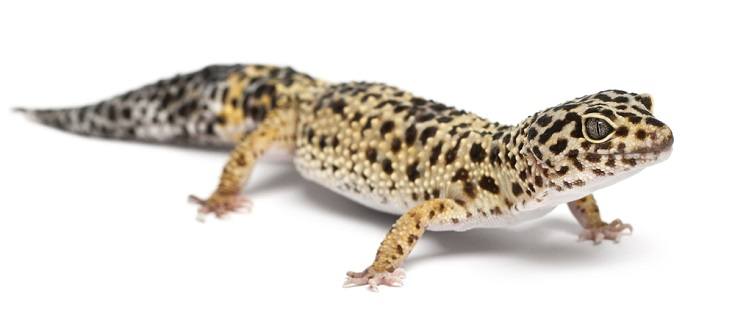
These geckos natively live in grasslands and deserts throughout middle eastern countries like Afghanistan, Iraq, and India. They’re recognizable due to their spots, stripes, and patterns.
The main morphs and patterns for leopard geckos are:
Crested Gecko
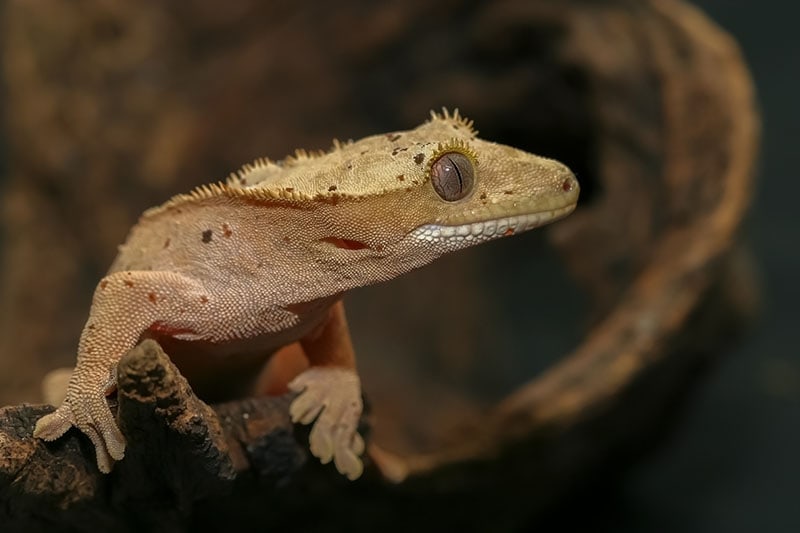
Also known as the eyelash gecko, the crested gecko is native to New Caledonia. They went from near extinction to becoming one of the favorite reptile pets everywhere.
The main morphs and patterns are:
Health & Care
A healthy gecko will be bright-eyed, alert, and reactive. Their skin should be soft to the touch with vibrant color—except for seasonal shedding. An adult gecko should eat once every 2-3 days.
If you notice a blockage in their nostrils or vent, this could signal a big problem. Also, if their skin is unusually dry or damaged, this is a cause for concern. Your gecko should also be responsive—not lethargic, listless, or sluggish.
The most frequently documented health issues in geckos are:
To ensure your gecko lives a long and healthy life, make sure to feed them an appropriate diet with gut-filled insects. Put a suitable substrate in their cage that they cannot ingest, and make sure their cage is at the proper temperature.
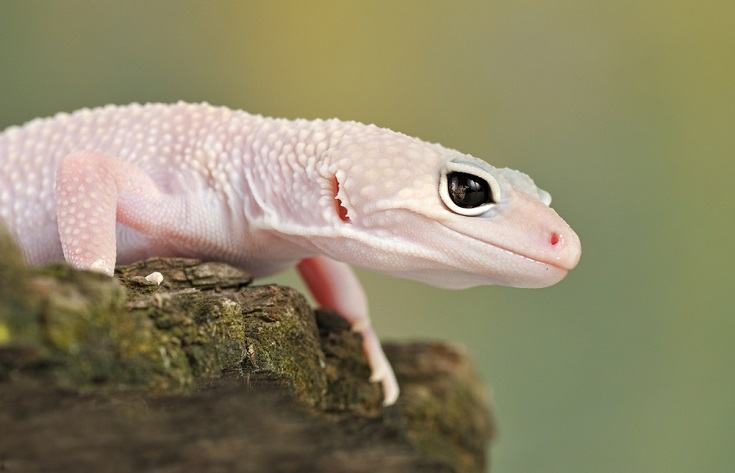
Suitable for:
Because geckos require such specific care, you’ll need to fully familiarize yourself with their needs. Of course, you can’t acquire experience without caring for one firsthand, but make sure to research carefully before bringing one home. They work well in most homes because of their small size and calm temperaments.
Lizard Overview
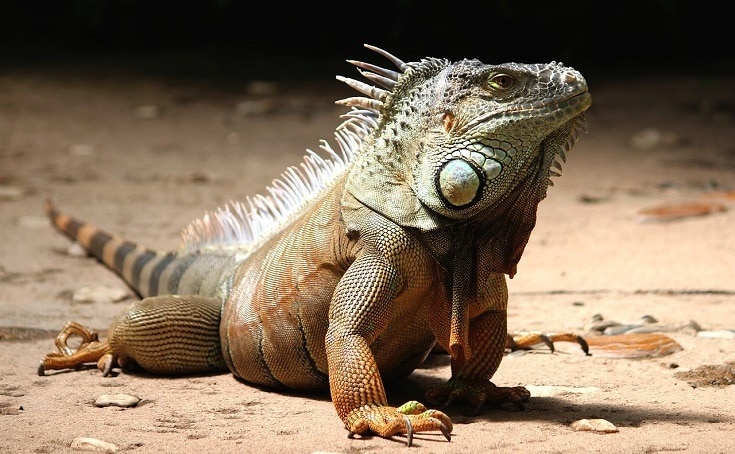
Lizards are found scattered all over the world in practically every different environment. There are all sorts of various sizes, textures, colors, and types. Lizards are entirely unique, each one requiring other specifics in their environment.
All lizards have in common that they’re all cold-blooded, they all lay legs, and they are all reptiles. There are over 4,675 different species of lizard—each with its own special sauce. Let’s find out a little bit more about these fantastic reptiles.
Environment
Lizards live in all parts of the world except Antarctica. Because each one lives in such a drastically different environment, you have to prepare to give them the right surroundings at home.
Different species of lizards can live in:
If you have a pet lizard, their terrarium needs to reflect their native land.
Lizards as Pets
There are several different lizards that you can keep in captivity. As long as you structure an appropriate living space to mimic their natural habitat and feed them the correct diet, they will thrive in a terrarium.
The most common types of lizards people have as pets include:
You can choose several more, but this list is a group of beginner-friendly lizards that are generally healthy and easy to keep as pets.
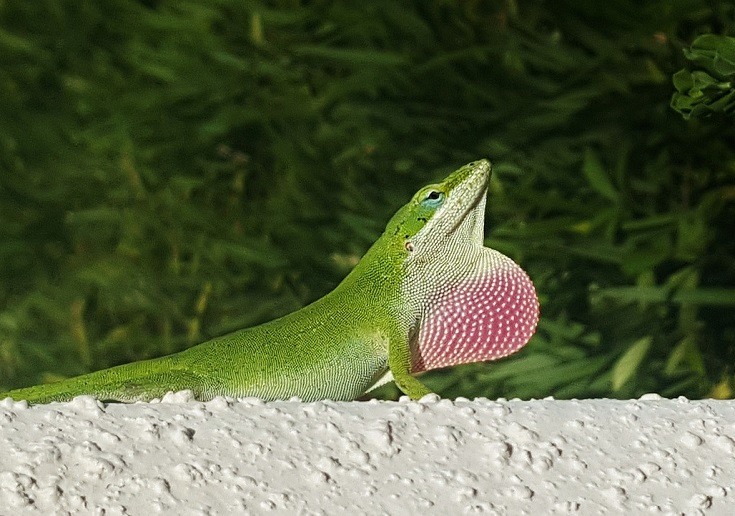
Health & Care
Because reptiles are so much different from mammals, you have to know the signs to look for to tell whether your lizard is healthy or sickly.
Signs of a healthy lizard include:
Symptoms that something may be wrong include:
Lizards can be pretty temperamental when it comes to health. Sometimes, the solution could be simple—other times, it takes a comprehensive examination from a vet to figure out what’s wrong.
*Tip: To keep your lizard healthy, offer fresh water, appropriate feedings, and proper temperature control.
Suitable for:
You can probably find a lizard that is compatible with your household, but it’s essential to select the right one. Lizards need continuous care, such as proper heat, humidity, food, and substrate. If you think that owning a lizard is inexpensive and easy, you should do lots of research after picking your favorite to make sure you’re ready for the maintenance aspect of general care.
Related Reads:
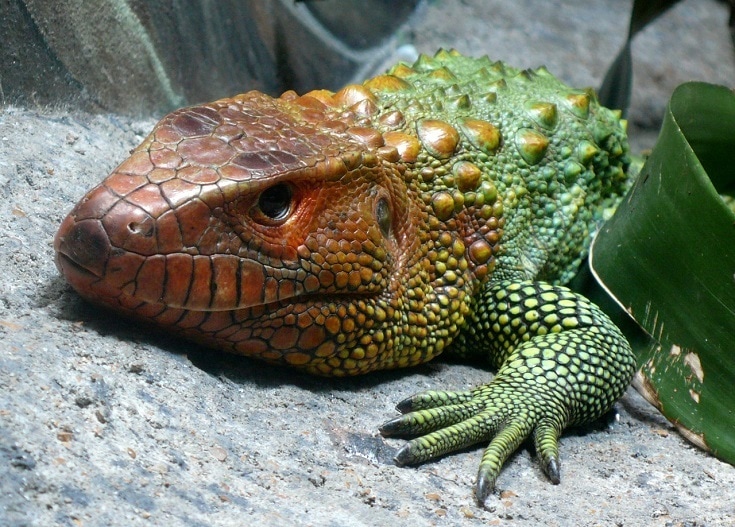
Understanding Overall Lizard Care
Walking into a pet store, you might be very excited to get the little lizard in the cage without understanding what you’re signing up for. It’s easy to see a small, adorable little reptile staring back at you and make an impulse buy without researching first.
Doing that is treading dangerous waters for a few reasons, so let’s break down what you need to consider before purchase. Here are some things to ask yourself:
How big will your lizard get?
What you see is definitely not what you get sometimes. When you go into a pet store or shop online, you are getting a baby version of what your lizard will grow to be. If you buy a gecko, they will only get so big and live so long.
But if you get—say—a savannah monitor, you’re in for a big surprise. These impressive beasts get up to five feet long and weigh up to 15 pounds! Your little 10-gallon aquarium won’t last long. Also, imagine the cost to feed such a large reptile.
If you don’t have space, proper enclosure, or diet source as they grow, you may have to end up rehoming or surrendering them. So, always research and ask questions to the seller before you make the final decision.
Do you know what type of environment your lizard needs?
Each lizard comes from a different home from all parts of the world. Some come from arid, desert climates, while others live in moist, humid places.
For example, if you have a bearded dragon, you wouldn’t want to keep them in a humid environment when they are used to dry, desolate places. If you keep their cage full of moisture, it can cause all sorts of respiratory illnesses.
On the other hand, if you have a tropical lizard who lives in a muggy rainforest, you can’t keep them in a dry, scorching terrarium. It will dry out their tender skin and cause just as many physical issues.
To buy any lizard, you will need to be familiar with their diet, appropriate substrate, branches, hides, plants, temperature, humidity, and required cage size. Failing to know any of these things can cause your lizard lots of trouble—and even lead to death if you don’t catch on in time.
Have you added up monthly costs for lizard care?
You might be fooled into thinking lizards are an inexpensive pet. Even though they require less direct care than other animals like dogs and cats, you’ll still need to keep up with costs.
Costs will vary depending on how much your lizard eats, how often their substrate needs changed, and how often heating bulbs or pads need to be replaced.

On average, it costs roughly $250 to get all of the start-up supplies. It can be more or less depending on how big of a cage you need and what type of food they eat.
Plus, lizards run into health issues, too. They require an exotic vet, which can be hard to find in some areas. They might also be more expensive than traditional vets. All of these factors need to be taken into consideration before you buy.
Final Thoughts
As you can see, there are so many various varieties of lizards you can pick from, including geckos. It all boils down to what type best suits you. Different types of lizards require varying levels of care, so you should always select a pet based on the care you can provide for them.
You may also be interested in:
- 10 Lizard Species Found in Florida
- 7 Lizards Found in Washington
- How to Clean Gecko Poop Stains: 4 Ideas and Tips
Featured Image Credit: Top – torstensimon, Pixabay | Bottom – InspiredImages, Pixabay











